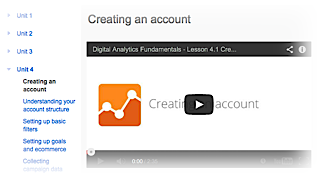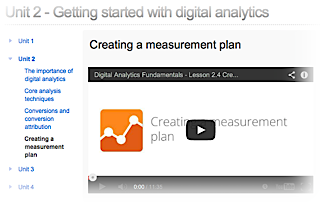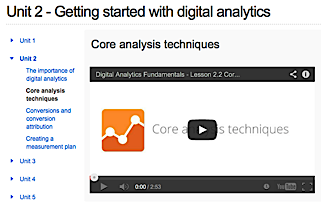 |
| Unit 5/1 - Reporting Overview |
The first part of the fifth lesson provides an overview to the reporting interface of Google Analytics.
For each report you can adjust its date range, which will stay active till changed again or you log out. In addition you can add a second date range to compare current with historic data.
The granularity of the shown data can be changed to day, week, or month.
You can select the shown metric, and also select a second one for comparison.
To mark certain events e.g. for future reference, you can add annotations.
For tables you can choose primary and secondary dimensions as well as its metrics - which are organized into tabs at the top of each report.
You can use filters to display only specific values of the primary dimension or use advanced filters consisting of various rule sets.
You can visualize data in different ways using view options:
- the data view as default option,
- the percentage view with pie charts,
- the performance view with bar graphs,
- the comparison view to see which values are above or below averages,
- and the pivot view with a pivot table with rows and columns showing different dimension values.
Shortcuts remember specific settings to avoid tedious reconfigurations ...



































